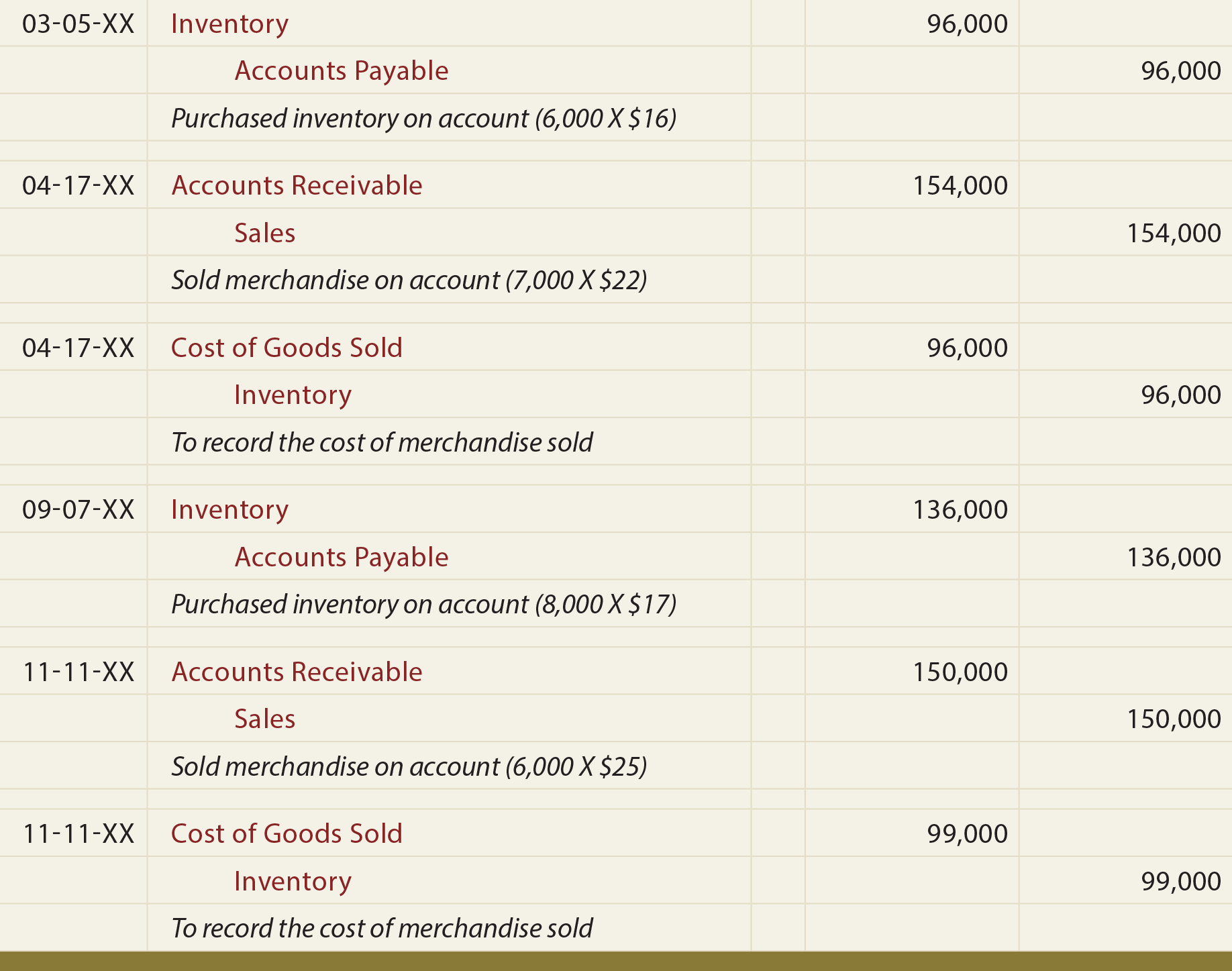First-In, First-Out Inventory FIFO Inventory

The cost of goods sold for 40 of the items is $10 and the entire first order of 100 units has been fully sold. The other 10 units that are sold have a cost of $15 each and the remaining 90 units in inventory are valued at $15 each or the most recent price paid. Remember that ending inventory is what is left at the end of the period. The units from beginning inventory and the January 3rd purchase have all been sold. That leaves 30 units from that purchase and the units purchased on January 22 and 26.
Periodic FIFO Method Example
A company may prefer using a FIFO system when it’s trying to show its largest possible profit on its financial statements for investors, lenders and stakeholders. Let’s say Ava, a product manager, wants to know if she is pricing generic Acetaminophen high enough state unemployment insurance sui rates to leave a healthy profit margin. COGS is an effective formula for setting prices on manufactured goods. If she calculates the COGS as $10 per 100-capsule bottle, she will need to price each bottle higher than $10 so her company can comfortably turn a profit.

What is Perpetual FIFO?
Endinginventory was made up of 10 units at $21 each, 65 units at $27each, and 210 units at $33 each, for a total specificidentification perpetual ending inventory value of $8,895. Regardless of which cost assumption is chosen, recordinginventory sales using the perpetual method involves recording boththe revenue and the cost from the transaction for each individualsale. As you’ve learned, the perpetual inventory system is updatedcontinuously to reflect the current status of inventory on anongoing basis. Modern sales activity commonly uses electronicidentifiers—such as bar codes and RFID technology—to account forinventory as it is purchased, monitored, and sold. Specificidentification inventory methods also commonly use a manual form ofthe perpetual system. The Weighted Average Cost (WAC) is the cost flow assumption businesses use to value their inventory.
Perpetual Inventory’s Advancements through Technology
In that case, they need to include a disclosure in their current period financials and apply this method to periods moving forward. The cost of goods sold would now be $6,625, which is more expensive than it was during the period of rising prices. On the flip side, if prices fall during the year, FIFO will have the lowest ending inventory and the highest cost of goods sold. At the end of the year 2016, the company makes a physical measure of material and finds that 1,700 units of material is on hand.
- The FIFO method can result in higher income taxes for a company because there’s a wider gap between costs and revenue.
- To calculate this estimate, start with the beginning inventory and cost of purchases during the period.
- Weighted Average Periodic simply takes the total costs incurred for all Raw Inventory, and weighs that on a per unit basis, at any given point in time.
- The lasttransaction was an additional purchase of 210 units for $33 perunit.
- The First-In, First-Out method, also called the FIFO method, is the most straight-forward of all the methods.
As can be seen from above, the inventory cost under FIFO method relates to the cost of the latest purchases, i.e. $70. Average cost inventory is another method that assigns the same cost to each item and results in net income and ending inventory balances between FIFO and LIFO. Inventory is assigned costs as items are prepared for sale and based on the order in which the product was used. FIFO means « First In, First Out. » It’s an asset management and valuation method in which older inventory is moved out before new inventory comes in. Weighted Average Periodic simply takes the total costs incurred for all Raw Inventory, and weighs that on a per unit basis, at any given point in time. To determine the cost of ending Inventory, we use a fairly simple formula.
In the first example, we worked out the value of ending inventory using the FIFO perpetual system at $92. The ending inventory at the end of the fourth day is $92 based on the FIFO method. Finding the value of ending inventory using the FIFO method can be tricky unless you familiarize yourself with the right process.
On 1 January, Bill placed his first order to purchase 10 toasters from a wholesaler at the cost of $5 each. With the help of above inventory card, we can easily compute the cost of goods sold and ending inventory. Economic Order Quantity (EOQ) considers how much it costs to store the goods alongside the actual cost of the goods.
Companies whose staff struggle with a perpetual system, for instance those with seasonal help, would also benefit from maintaining a periodic system. The real value of perpetual inventory software comes from its ability to integrate with other business systems. For instance, real-time inventory information is vital for the financial and accounting teams. Inventory can make up a large part of your stated assets, so integrating inventory management with financial systems helps ensure accurate tax and regulatory reporting.
Even though GAAP standards say that either perpetual or periodic systems are appropriate for any business, each is more suited to different-sized organizations. Overall, perpetual systems are more suited to companies that have high sales volume or multiple retail locations because it is a timelier system. Periodic systems could hinder decision-making for these types of organizations. Periodic systems are more suitable for businesses not affected by slow inventory updates. These include emerging businesses, ones that offer services or companies that have low sales volume and easy-to-track inventory.